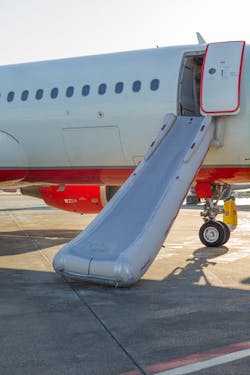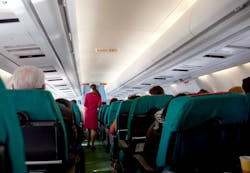CUPE: Flight attendants on Asiana Flight 214 instrumental, Air Canada should maintain high safety standard
OTTAWA, Ontario, 16 July 2013. Officials at the Air Canada Component of the Canadian Union of Public Employees (CUPE)--representing more than 6,500 Air Canada flight attendants based in Vancouver, Calgary, Toronto, and Montreal--are hoping that Air Canada learns from the flight attendant ratio on the airplane at the time of Asiana Flight 214's tragic crash in San Francisco this month.
The rapid actions taken by the flight attendants working with the passengers were crucial to the successful evacuation and survival of so many individuals on board despite horrific conditions, says a CUPE spokesperson.
Asiana Airlines Flight 214 reportedly had a ratio of one flight attendant per 24 passengers when it crashed. Two passengers died out of 307 individuals on board. In a similar situation in 2005, all passengers aboard Air France Flight 358 were quickly and safely evacuated after the airplane skidded off the runway and burst into flames. At the time, the Air France flight had a ratio of 1 flight attendant per 35 passengers.
"The heroic actions taken by the Asiana flight attendants during the San Francisco evacuation prove yet again that having an appropriate number of flight attendants on board an aircraft can make a huge difference in the survivability of these types of disasters," says Michel Cournoyer, president of the Air Canada Component of CUPE. "Canadians are proud of our country's above-par aviation safety standards, and I'm sure Air Canada will recognize the importance of maintaining these high standards as we move forward and learn from this unfortunate accident."
Given the growing body of evidence that demonstrates how a high ratio of flight attendants can make a difference in the survival of passengers, CUPE, the union that represents Air Canada flight attendants, is formally asking Air Canada to withdraw its request for an exemption from Transport Canada which would allow cutting the minimum requirement of flight attendants on board Canadian airplanes from 1:40 passengers to 1:50 seats.
Transport Canada recently granted this regulatory exemption to Westjet, and Air Canada followed suit by asking for the same exemption. The request is currently under review by Minister of Transport Denis Lebel.
Follow Avionics Intelligence news updates on Twitter (@Avionics_Intel), LinkedIn, and Google+.
Flight attendant images courtesy Shutterstock.


